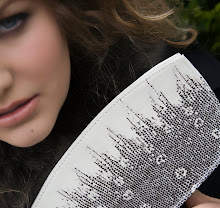“Fashion is made to become unfashionable.” - Coco Chanel
That’s the unspoken mantra of most ‘It’ brands today. Instead of timeless style, they give us new trends each season. Instead of exclusivity based on scarcity, we have exclusivity based on price. Instead of high quality handmade craftsmanship we have mass production from China with finishing touches in Italy or France to justify the Made in Italy or Made in France label. Luxury is available to the masses but luxury isn’t what it used to be.
At one time, our ‘It’ bag luxury brands were small family owned businesses catering exclusively to royalty and the very wealthy. Today most are brands owned by one of three conglomerates. Conglomerates focused on profits that have made their owners the richest men in France.
Bernard Arnault bought 43% of LVMH during the 1987 stock market crash. He wanted to add Dior perfume to his Dior clothing brand. Once at the helm, he led LVMH through an ambitious development plan acquiring luxury goods brands including, Louis Vuitton , Fendi , Celine , Donna Karan New York (DKNY) , Emilio Pucci , Givenchy , Loewe , Marc Jacobs LVMH is the largest luxury group and Bernard Arnault is the second richest man in France.
Bernard Arnault tried to buy Gucci but lost in a battle with PPR the second or fourth largest luxury conglomerate. Gucci, Yves Saint Laurent, Alexander McQueen, Stella McCartney, Sergio Rossi, Bottega Veneta, operate as brands within the Gucci Group owned by PPR.
The third largest luxury goods conglomerate is Swiss-based Richemont, which owns Cartier, Van Cleef & Arpels, Piaget, Baume et Mercier, IWC, Jaeger-LeCoultre, A. Lange & Söhne, Officine Panerai, Vacheron Constantin, Dunhill, Lancel, Montblanc, Montegrappa, Old England, Purdey, Chloé, and Shanghai Tang. Richemont focuses more on Watches, jewelry and writing implements.
Ten ‘It’ handbag brands owned by three very profitable conglomerates. Ten brands with the same tactics to maximize profits. Introduce a new trend each season, mass produce using the cheapest labor, market, market, market to create a need to achieve status. Tightly control distribution.
For fifteen years the results were phenomenal with double digit growth mostly from handbags and shoes. Luxury goods are usually insulated from economic downturns, but 2008 was a difficult year even for luxury goods. The economic slump is expected to continue through most of 2009. Consumers, still in a good position financially are careful with their purchases and are buying more traditionally designed bags that can be considered an ‘investment piece’. ‘In essence, frivolity is out of fashion – short-lived Champagne high - bad - long-lasting leather - good.’ Luxury brands that have stayed to the tenants of luxury have done well. Hermes, the only handbag brand that still makes their bags by hand, has done well in today’s difficult economic climate and announced better than expected profits in March 2009.
That may make them a target for acquisition. According to the Financial Times smaller weaker brands will be bought up the big conglomerates. LVHM is interested in Hermes and Prada. There may even be a merger of conglomerates as PPR and Richemont consider how to seize top position from LVMH.
As more and more ‘luxury’ brands are bought by conglomerates bent on profits one has to ask whether they really are luxury brands or well marketed mass produced fashion brands. The most sophisticated luxury consumers will seek out truly unique quality handbags from small designers. Like Fossati.
Subscribe to:
Post Comments (Atom)




No comments:
Post a Comment